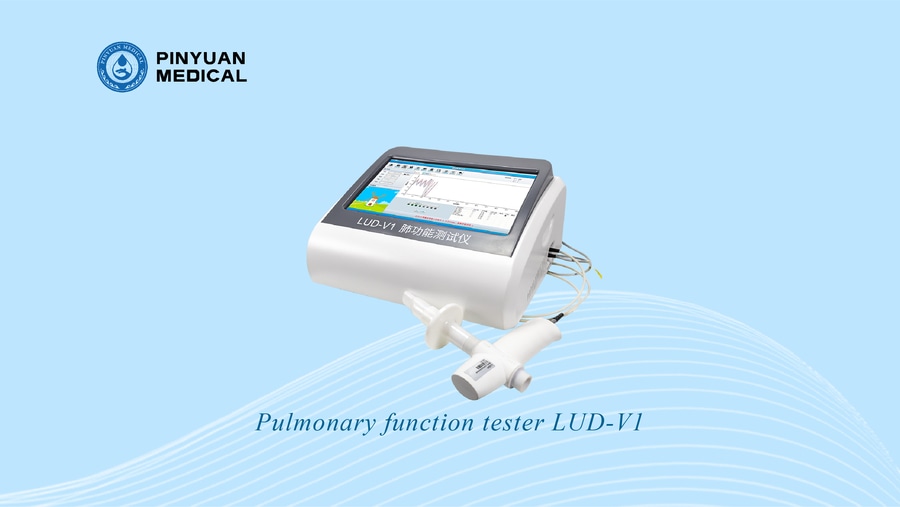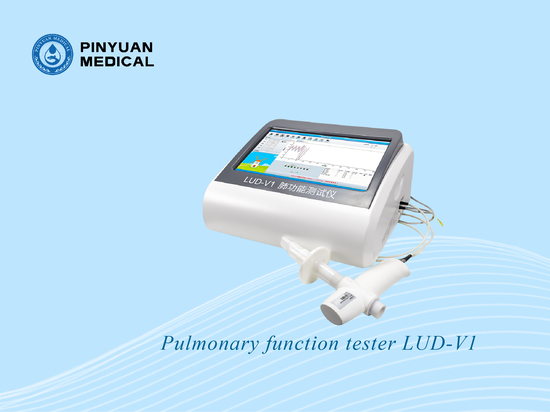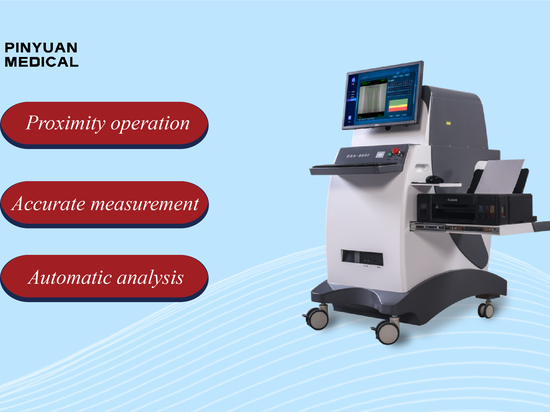
#Industry News
Do you know how your lungs function?
Lung function examination is to check the function of the human respiratory system,It has the advantages of non-invasive, painless, non-radiation, high sensitivity and portability
Lung function usually refers to the respiratory function of the lungs, that is, the ability to exchange gas between the human body and the external environment.
Lung function is normal, breathing can be unimpeded; Lung function is abnormal, there will be shortness of breath, breathing difficulties and other symptoms. However, in the early stage of respiratory system disease, the human body generally does not have obvious feelings and symptoms, and can breathe normally, but the lung function has been quietly damaged at this time.
In order to detect lung function damage early and avoid disease aggravation, the best way is to do lung function examination. Lung function examination is the "gold standard" for diagnosing COPD lung disease, Academician Zhong Nanshan proposed: "Test lung function like blood pressure!" This article takes you through this important examination in detail.
What is a lung function test?
Lung function examination is to check the function of the human respiratory system, including lung ventilation function examination, lung volume examination, airway resistance, lung diffusion function examination, bronchodilation test, excitation test, etc.
It has the advantages of non-invasive, painless, non-radiation, high sensitivity and portability, which can be used for early detection of COPD, chronic bronchitis, emphysema, bronchial asthma and other lung diseases, and can also be used to identify the cause of dyspnea, and evaluate the severity of lung diseases and treatment effects.
Precautions before pulmonary function examination
Stop smoking 24 hours before the examination, do not drink alcohol or eat alcoholic food within 4 hours;
Avoid strenuous exercise for at least 30 minutes before the examination;
Subjects need to measure their height and weight on site, barefoot and lightly dressed. In case of scoliosis and other cases where height cannot be accurately measured, the fingertip distance of both hands can be used instead.
The information of pulmonary function examination shall be entered using the actual birth year and date of the subject. If the information is different from the ID card and other information, the actual information shall prevail.
During the examination, a seat should be taken, and a chair with stable landing and backrest should be used.
During the examination, it is recommended to use a nose clip. If the nose clip cannot be used, hold the nose with one hand.
Who needs a lung function test?
01. Middle-aged and above:
The Chronic respiratory Disease action plan of the Healthy China Initiative emphasizes that "lung function tests should be included in the routine physical examination of people aged 40 and above." It is recommended that adults 40 years of age and older have a lung function test at least once a year to monitor functional changes in the lungs.
02. Smokers and those exposed to second-hand smoke:
Long-term smoking or frequent exposure to second-hand smoke can seriously harm lung organs, and lung function tests should be performed regularly.
03. Chronic respiratory symptoms:
For patients with chronic cough, expectoration, shortness of breath, chest tightness, dyspnea and other symptoms for a long time, pulmonary function examination is helpful to further explore the cause.
04. High-risk occupational groups:
Workers who are exposed to dust, toxic gases or chemicals for a long time should have their lung function checked regularly to facilitate early detection of occupational lung diseases.
05. Patients with confirmed lung disease:
For patients with chronic respiratory diseases such as COPD, asthma, pulmonary fibrosis, etc., pulmonary function examination is needed to evaluate disease progression and treatment effect.
06. Patients preparing for surgery:
Pulmonary function examination is very important for preoperative evaluation and prediction of postoperative recovery, especially before thoracic and abdominal surgery.






